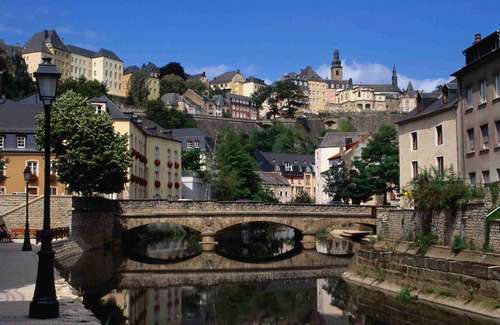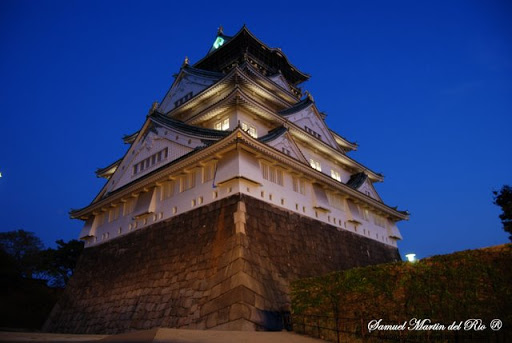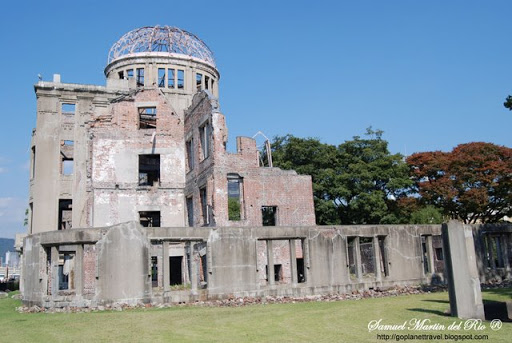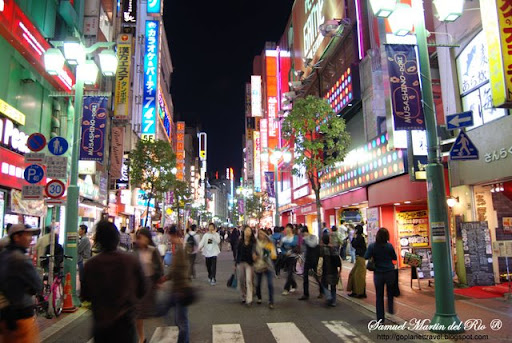Related:
BELGIUM
Brussels
Ghent
I took a train from Brussels, the capital of Belgium, to Brugges. Was take me about two hours by train, but the way was beautiful too. Brugges is one of the most beautiful city that I visited in Europe.
train, but the way was beautiful too. Brugges is one of the most beautiful city that I visited in Europe.
Is a small city in the west of Belgium like a medieval town. I was a great time there and I recommend to everybody go. The main Square is full of medieval buildings as you can see in the pictures.
Around the village there are a lot of canals, something similar to Venice, where you can sail in small boats and enjoy all hide corners.
Travel to Brugges is like travel in the past time. It’s a gr eat experience.Also you can see the famous sculture of Madonna & Child of Michelangelo in the Ours Mother´s Church.
eat experience.Also you can see the famous sculture of Madonna & Child of Michelangelo in the Ours Mother´s Church.
There a lot of museums too if you are interested in that. Some of these museums are Groeninge Museum, Arents House Museum, Gruuthuse Museum, and a lot of more.
Bruges is the capital and largest city of the province of West Flanders in the Flemish Region of Belgium. It is located in the northwest of the country.
The historic city centre is a prominent World Heritage Site of UNESCO. It is egg-shaped and about 430 hectares in size. The area of the whole city amounts to more than 13,840 hectares, including 1,075 hectares off the coast, at Zeebrugge ("Seabruges" in literal translation). The city's total population is 117,073 (1 January 2008), of which around 20,000 live in the historic centre. The metropolitan area, including the outer commuter zone, covers an area of 616 km² and has a total of 255,844 inhabitants as of 1 January 2008.
Heritage Site of UNESCO. It is egg-shaped and about 430 hectares in size. The area of the whole city amounts to more than 13,840 hectares, including 1,075 hectares off the coast, at Zeebrugge ("Seabruges" in literal translation). The city's total population is 117,073 (1 January 2008), of which around 20,000 live in the historic centre. The metropolitan area, including the outer commuter zone, covers an area of 616 km² and has a total of 255,844 inhabitants as of 1 January 2008.
Along with a few other canal-based northern cities, such as Amsterdam, it is sometimes referred to as "The Venice of the North".
Bruges has a significant economic importance thanks to its port. At one time it was the "chief commercial city" of the world. Bruges is also home to the College of Europe.
Very few traces of human activity date from the Pre-Roman Gaul era. The first fortifications were built after Julius Caesar's conquest of the Menapii in the first century BC, to protect the coastal area against pirates. The Franks took over the whole region from the Gallo-Romans around the 4th century and administered it as the Pagus Flandrensis. The Viking incursions of the ninth century prompted Baldwin I, Count of Flanders to reinforce the Roman fortifications; trade soon resumed with England and Scandinavia. It is at around this time that coins appeared for the first time bearing the name Bryggia. This name may stem from the Old Norse Bryggja, meaning "landing stage" or "port", and may have the same origin as Norway’s Bryggen.
Bruges got its city charter on July 27, 1128 and built itself new walls and canals. Since about 1050, gradual silting had caused the city to lose its direct access to the sea. A storm in 1134, however, re-established this access, through the creation of a natural channel at the Zwin. The new sea arm stretched all the way to Damme, a city that became the commercial outpost for Bruges.
gradual silting had caused the city to lose its direct access to the sea. A storm in 1134, however, re-established this access, through the creation of a natural channel at the Zwin. The new sea arm stretched all the way to Damme, a city that became the commercial outpost for Bruges.
With the reawakening of town life in the twelfth century, a wool market, a woollens weaving industry, and the market for cloth all profited from the shelter of city walls, where surpluses could be safely accumulated under the patronage of the counts of Flanders. Bruges was already included in the circuit of the Flemish cloth fairs at the beginning of the 13th century. The city's entrepreneurs reached out to make economic colonies of England and Scotland's wool-producing districts. English contacts brought Normandy grain and Gascon wines. Hanseatic ships filled the harbor, which had to be expanded beyond Damme to Sluys to accommodate the new cog-ships. In 1277, the first merchant fleet from Genoa appeared in the port of Bruges, first of the merchant colony that made Bruges the main link to the trade of the Mediterranean. This development opened not only the trade in spices from the Levant, but also advanced commercial and financial techniques and a flood of capital that soon took over the banking of Bruges. The Bourse opened in 1309 and developed into the most sophisticated money market of the Low Countries in the 14th century. By the time Venetian galleys first appeared, in 1314, they were latecomers.
which had to be expanded beyond Damme to Sluys to accommodate the new cog-ships. In 1277, the first merchant fleet from Genoa appeared in the port of Bruges, first of the merchant colony that made Bruges the main link to the trade of the Mediterranean. This development opened not only the trade in spices from the Levant, but also advanced commercial and financial techniques and a flood of capital that soon took over the banking of Bruges. The Bourse opened in 1309 and developed into the most sophisticated money market of the Low Countries in the 14th century. By the time Venetian galleys first appeared, in 1314, they were latecomers.
Such wealth gave rise to social upheavals, which were for the most part harshly contained. In 1302, however, after the Bruges Matins, the population joined forces with the Count of Flanders against the French, culminating in the victory at the Battle of the Golden Spurs, fought near Kortrijk on July 11. The statue of Jan Breydel and Pieter de Coninck, the leaders of the uprising, can still be seen on the Big Market square.
however, after the Bruges Matins, the population joined forces with the Count of Flanders against the French, culminating in the victory at the Battle of the Golden Spurs, fought near Kortrijk on July 11. The statue of Jan Breydel and Pieter de Coninck, the leaders of the uprising, can still be seen on the Big Market square.
In the 15th century, Philip the Good, duke of Burgundy, set up court in Bruges, as well as Brussels and Lille, attracting a number of artists, bankers, and other prominent personalities from all over Europe. The weavers and spinners of Bruges were thought to be the best in the world, and the population of Bruges grew to 200,000 inhabitants at this time.
The new Flemish-school, oil-painting techniques gained world renown. The first book in English ever printed was published in Bruges by William Caxton. This is also the time when Edward IV and Richard III of England spent time in exile here.
III of England spent time in exile here.
Starting around 1500, the Zwin channel, which had given the city its prosperity, also started silting. The city soon fell behind Antwerp as the economic flagship of the Low Countries. During the 17th century, the lace industry took off, and various efforts to bring back the glorious past were made. During the 1650s, the city was the base for Charles II of England and his court in exile. The maritime infrastructure was modernized, and new connections with the sea were built, but without much success. Bruges became impoverished and gradually disappeared from the picture, with its population dwindling from 200,000 to 50,000 by the end of the 1800s.
The symbolist novelist George Rodenbach even made the sleepy city into a character in his novel Bruges-la-Morte, meaning "Bruges-the-dead", which was adapted into Erich Wolfgang Korngold's opera, Die tote Stadt (The Dead City). In the last half of the 19th century, Bruges became one of the world's first tourist destinations attracting wealthy British and French tourists. Only in the second half of the 20th century has the city started to reclaim some of its past glory. The port of Zeebrugge was built in 1907. The Germans used it for their U-boats in World War I. It was greatly expanded in the 1970s and early 1980s and has become one of Europe's most important and modern ports. International tourism has boomed, and new efforts have resulted in Bruges being designated 'European Capital of Culture' in 2002.
Bruges-la-Morte, meaning "Bruges-the-dead", which was adapted into Erich Wolfgang Korngold's opera, Die tote Stadt (The Dead City). In the last half of the 19th century, Bruges became one of the world's first tourist destinations attracting wealthy British and French tourists. Only in the second half of the 20th century has the city started to reclaim some of its past glory. The port of Zeebrugge was built in 1907. The Germans used it for their U-boats in World War I. It was greatly expanded in the 1970s and early 1980s and has become one of Europe's most important and modern ports. International tourism has boomed, and new efforts have resulted in Bruges being designated 'European Capital of Culture' in 2002.
LAND MARKS
• The Beguinage
• The Basilica of the Holy Blood (Dutch: Heilig-Bloedbasiliek). The relic of the Holy Blood, which was brought to the city after the Second Crusade by Thierry of Alsace, is paraded every year through the streets of the city. More than 1,600 inhabitants take part in this mile-long religious procession, many dressed as medieval knights or crusaders.
The relic of the Holy Blood, which was brought to the city after the Second Crusade by Thierry of Alsace, is paraded every year through the streets of the city. More than 1,600 inhabitants take part in this mile-long religious procession, many dressed as medieval knights or crusaders.
• The modern Concertgebouw ("Concert Building")
• The Old St-John's Hospital
• The Saint Salvator's Cathedral
• The Groeningemuseum
• The City Hall on the Burg square
• The Provincial Court (Provinciaal Hof)
• The preserved old city gateways: the Kruispoort, the Gentpoort, the Smedenpoort and the Ezelpoort. The Dampoort, the Katelijnepoort and the Boeveriepoort are gone.
July 2002
BELGIUM
Brussels
Ghent
I took a train from Brussels, the capital of Belgium, to Brugges. Was take me about two hours by
 train, but the way was beautiful too. Brugges is one of the most beautiful city that I visited in Europe.
train, but the way was beautiful too. Brugges is one of the most beautiful city that I visited in Europe. Is a small city in the west of Belgium like a medieval town. I was a great time there and I recommend to everybody go. The main Square is full of medieval buildings as you can see in the pictures.
Around the village there are a lot of canals, something similar to Venice, where you can sail in small boats and enjoy all hide corners.
Travel to Brugges is like travel in the past time. It’s a gr
 eat experience.Also you can see the famous sculture of Madonna & Child of Michelangelo in the Ours Mother´s Church.
eat experience.Also you can see the famous sculture of Madonna & Child of Michelangelo in the Ours Mother´s Church.There a lot of museums too if you are interested in that. Some of these museums are Groeninge Museum, Arents House Museum, Gruuthuse Museum, and a lot of more.
Bruges is the capital and largest city of the province of West Flanders in the Flemish Region of Belgium. It is located in the northwest of the country.
The historic city centre is a prominent World
 Heritage Site of UNESCO. It is egg-shaped and about 430 hectares in size. The area of the whole city amounts to more than 13,840 hectares, including 1,075 hectares off the coast, at Zeebrugge ("Seabruges" in literal translation). The city's total population is 117,073 (1 January 2008), of which around 20,000 live in the historic centre. The metropolitan area, including the outer commuter zone, covers an area of 616 km² and has a total of 255,844 inhabitants as of 1 January 2008.
Heritage Site of UNESCO. It is egg-shaped and about 430 hectares in size. The area of the whole city amounts to more than 13,840 hectares, including 1,075 hectares off the coast, at Zeebrugge ("Seabruges" in literal translation). The city's total population is 117,073 (1 January 2008), of which around 20,000 live in the historic centre. The metropolitan area, including the outer commuter zone, covers an area of 616 km² and has a total of 255,844 inhabitants as of 1 January 2008.Along with a few other canal-based northern cities, such as Amsterdam, it is sometimes referred to as "The Venice of the North".
Bruges has a significant economic importance thanks to its port. At one time it was the "chief commercial city" of the world. Bruges is also home to the College of Europe.

Very few traces of human activity date from the Pre-Roman Gaul era. The first fortifications were built after Julius Caesar's conquest of the Menapii in the first century BC, to protect the coastal area against pirates. The Franks took over the whole region from the Gallo-Romans around the 4th century and administered it as the Pagus Flandrensis. The Viking incursions of the ninth century prompted Baldwin I, Count of Flanders to reinforce the Roman fortifications; trade soon resumed with England and Scandinavia. It is at around this time that coins appeared for the first time bearing the name Bryggia. This name may stem from the Old Norse Bryggja, meaning "landing stage" or "port", and may have the same origin as Norway’s Bryggen.
Bruges got its city charter on July 27, 1128 and built itself new walls and canals. Since about 1050,
 gradual silting had caused the city to lose its direct access to the sea. A storm in 1134, however, re-established this access, through the creation of a natural channel at the Zwin. The new sea arm stretched all the way to Damme, a city that became the commercial outpost for Bruges.
gradual silting had caused the city to lose its direct access to the sea. A storm in 1134, however, re-established this access, through the creation of a natural channel at the Zwin. The new sea arm stretched all the way to Damme, a city that became the commercial outpost for Bruges.With the reawakening of town life in the twelfth century, a wool market, a woollens weaving industry, and the market for cloth all profited from the shelter of city walls, where surpluses could be safely accumulated under the patronage of the counts of Flanders. Bruges was already included in the circuit of the Flemish cloth fairs at the beginning of the 13th century. The city's entrepreneurs reached out to make economic colonies of England and Scotland's wool-producing districts. English contacts brought Normandy grain and Gascon wines. Hanseatic ships filled the harbor,
 which had to be expanded beyond Damme to Sluys to accommodate the new cog-ships. In 1277, the first merchant fleet from Genoa appeared in the port of Bruges, first of the merchant colony that made Bruges the main link to the trade of the Mediterranean. This development opened not only the trade in spices from the Levant, but also advanced commercial and financial techniques and a flood of capital that soon took over the banking of Bruges. The Bourse opened in 1309 and developed into the most sophisticated money market of the Low Countries in the 14th century. By the time Venetian galleys first appeared, in 1314, they were latecomers.
which had to be expanded beyond Damme to Sluys to accommodate the new cog-ships. In 1277, the first merchant fleet from Genoa appeared in the port of Bruges, first of the merchant colony that made Bruges the main link to the trade of the Mediterranean. This development opened not only the trade in spices from the Levant, but also advanced commercial and financial techniques and a flood of capital that soon took over the banking of Bruges. The Bourse opened in 1309 and developed into the most sophisticated money market of the Low Countries in the 14th century. By the time Venetian galleys first appeared, in 1314, they were latecomers.Such wealth gave rise to social upheavals, which were for the most part harshly contained. In 1302,
 however, after the Bruges Matins, the population joined forces with the Count of Flanders against the French, culminating in the victory at the Battle of the Golden Spurs, fought near Kortrijk on July 11. The statue of Jan Breydel and Pieter de Coninck, the leaders of the uprising, can still be seen on the Big Market square.
however, after the Bruges Matins, the population joined forces with the Count of Flanders against the French, culminating in the victory at the Battle of the Golden Spurs, fought near Kortrijk on July 11. The statue of Jan Breydel and Pieter de Coninck, the leaders of the uprising, can still be seen on the Big Market square.In the 15th century, Philip the Good, duke of Burgundy, set up court in Bruges, as well as Brussels and Lille, attracting a number of artists, bankers, and other prominent personalities from all over Europe. The weavers and spinners of Bruges were thought to be the best in the world, and the population of Bruges grew to 200,000 inhabitants at this time.
The new Flemish-school, oil-painting techniques gained world renown. The first book in English ever printed was published in Bruges by William Caxton. This is also the time when Edward IV and Richard
 III of England spent time in exile here.
III of England spent time in exile here.Starting around 1500, the Zwin channel, which had given the city its prosperity, also started silting. The city soon fell behind Antwerp as the economic flagship of the Low Countries. During the 17th century, the lace industry took off, and various efforts to bring back the glorious past were made. During the 1650s, the city was the base for Charles II of England and his court in exile. The maritime infrastructure was modernized, and new connections with the sea were built, but without much success. Bruges became impoverished and gradually disappeared from the picture, with its population dwindling from 200,000 to 50,000 by the end of the 1800s.
The symbolist novelist George Rodenbach even made the sleepy city into a character in his novel
 Bruges-la-Morte, meaning "Bruges-the-dead", which was adapted into Erich Wolfgang Korngold's opera, Die tote Stadt (The Dead City). In the last half of the 19th century, Bruges became one of the world's first tourist destinations attracting wealthy British and French tourists. Only in the second half of the 20th century has the city started to reclaim some of its past glory. The port of Zeebrugge was built in 1907. The Germans used it for their U-boats in World War I. It was greatly expanded in the 1970s and early 1980s and has become one of Europe's most important and modern ports. International tourism has boomed, and new efforts have resulted in Bruges being designated 'European Capital of Culture' in 2002.
Bruges-la-Morte, meaning "Bruges-the-dead", which was adapted into Erich Wolfgang Korngold's opera, Die tote Stadt (The Dead City). In the last half of the 19th century, Bruges became one of the world's first tourist destinations attracting wealthy British and French tourists. Only in the second half of the 20th century has the city started to reclaim some of its past glory. The port of Zeebrugge was built in 1907. The Germans used it for their U-boats in World War I. It was greatly expanded in the 1970s and early 1980s and has become one of Europe's most important and modern ports. International tourism has boomed, and new efforts have resulted in Bruges being designated 'European Capital of Culture' in 2002.LAND MARKS
• The Beguinage
• The Basilica of the Holy Blood (Dutch: Heilig-Bloedbasiliek).
 The relic of the Holy Blood, which was brought to the city after the Second Crusade by Thierry of Alsace, is paraded every year through the streets of the city. More than 1,600 inhabitants take part in this mile-long religious procession, many dressed as medieval knights or crusaders.
The relic of the Holy Blood, which was brought to the city after the Second Crusade by Thierry of Alsace, is paraded every year through the streets of the city. More than 1,600 inhabitants take part in this mile-long religious procession, many dressed as medieval knights or crusaders.• The modern Concertgebouw ("Concert Building")
• The Old St-John's Hospital
• The Saint Salvator's Cathedral
• The Groeningemuseum
• The City Hall on the Burg square
• The Provincial Court (Provinciaal Hof)
• The preserved old city gateways: the Kruispoort, the Gentpoort, the Smedenpoort and the Ezelpoort. The Dampoort, the Katelijnepoort and the Boeveriepoort are gone.
July 2002



































































































No comments:
Post a Comment